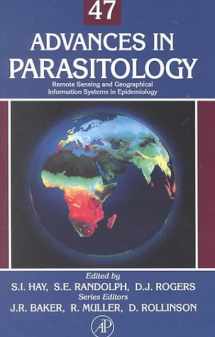
Remote Sensing and Geographical Information Systems in Epidemiology, Volume 47: Remote Sensing and GIS in Epidemiology (Advances in Parasitology)
Book details
Summary
Description
Global problems require global information, and satellites are now the key to providing this. With ever more sophisticated control methods being developed for infectious diseases, our ability to map spatial and temporal variation in risk is more important than ever. Only then may we plan control campaigns and deliver novel interventions and remedies where the need is greatest, and sustainable success is most likely. This book presents a comprehensive guide to using the very latest methods of surveillance from satellites, to analyzing spatial data within geographical information systems, to interpreting complex biological patterns and to predicting risk both today and as it may change in the future.
Of all infectious disease systems, those that involve free-living invertebrate vectors or intermediate hosts are most susceptible to changing environmental conditions, and have hitherto received most attention from the marriage of analytical biology with this new space technology. Accordingly, this volume presents detailed case studies on malaria, African trypanosomiasis (sleeping sickness), tick-borne infections and helminths (worms). The lessons to be learned from these studies are applicable to many other epidemiological and ecological problems that face us today, most significantly the preservation of the world's bio-diversity. For those who are unfamiliar with this science, and unsure how to start, the book ends with a chapter of practical advice on where to seek hands-on instruction.
Key Features
* This volume in Advances in Parasitology is special HOT volume for the following reasons:
* These techniques solve epidemiological problems on a global scale and are relevant to subjects ranging from bio-diversity to public health
* Application of remote sensing (RS) and geographical information system (GIS) techniques to parasitology/epidemiology is a topical and expanding field - recent international conferences have devoted special sessions to RS and the London School of Hygiene and Tropical Medicine/Wellcome are setting up a RS and GIS lab
* There are no other books that help life science researchers apply these 'physical' techniques to their work
* It is timely - many new opportunities for remote sensing with the launch of new satellite systems in 2000
* Publishing also as a paperback to encourage individual sales


We would LOVE it if you could help us and other readers by reviewing the book
Book review



